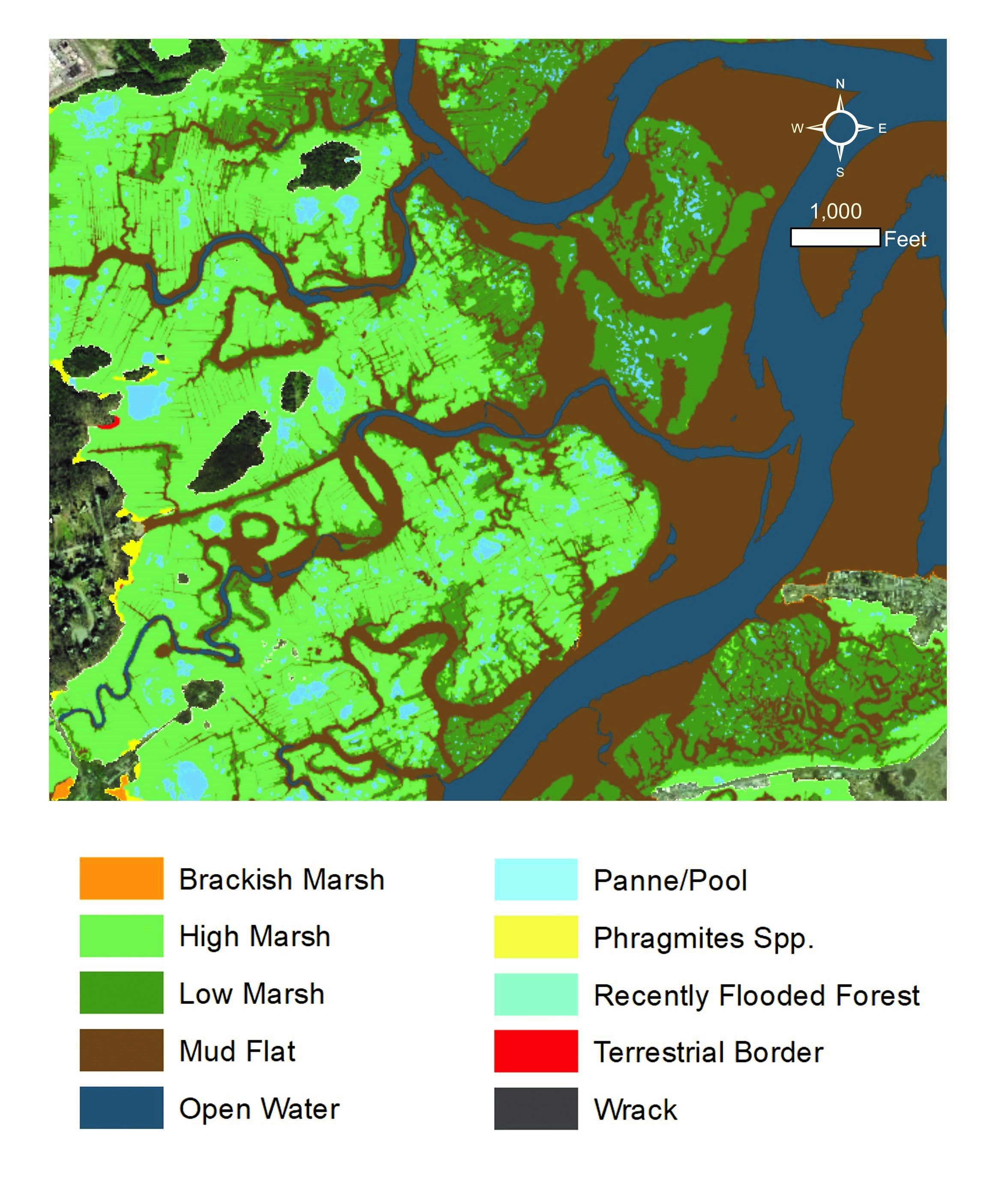Issue
Salt marshes provide communities with important benefits, such as fisheries habitat, water filtration, flood control, and carbon sequestration. Understanding where salt marshes are, how they are changing, and what might happen to them as sea levels rise and coastal development encroaches is critical to protecting the valuable services they provide to people and wildlife. Moderate-resolution maps and models do not provide the information resource managers need to make the informed parcel-level decisions to ensure their survival.
Process
NOAA and the Great Bay National Estuarine Research Reserve partnered to develop a high-resolution map of salt marsh habitats throughout New Hampshire. Other partners included the New Hampshire Coastal Program, University of New Hampshire, and New Hampshire Fish and Game Department. The developers followed salt marsh mapping methods developed by NOAA’s Office for Coastal Management that use high-resolution imagery, lidar data, and field data to identify habitat types and mixed species areas, from the tidal creeks to the upland edges of the salt marshes. The habitat data were combined with high-resolution land cover, shoreline, sea level rise, and other data sets to conduct a statewide salt marsh resilience assessment that examined current conditions, vulnerability, and capacity of individual salt marshes to adapt. The partners then used the resilience assessment to recommend best management practices for each marsh as part of a statewide marsh plan.
Impact
This effort implemented standardized salt marsh habitat mapping for the State of New Hampshire and established a baseline against which future map updates can be compared to determine trends in marsh extent and condition. The salt marsh habitat data and statewide marsh resilience assessment enabled Great Bay Reserve and partners to pinpoint marsh-by-marsh management strategies to improve their resilience. The New Hampshire Marsh Plan serves as a screening tool to show where restoration, experimental science, land conservation, and land use planning can be most effective in protecting the salt marshes based on current condition, vulnerability, and adaptation potential. Because so many partners contributed to developing the data set and the model, the results are truly shared and all parties can act on them to leverage as many funding sources and resources as possible. (2021)

Contributors
- Great Bay National Estuarine Research Reserve
- New Hampshire Department of Environmental Services Coastal Program
- New Hampshire Fish and Game Department
- NOAA Office for Coastal Management
- Piscataqua Region Estuaries Partnership
- The Nature Conservancy, New Hampshire Chapter
- University of New Hampshire
